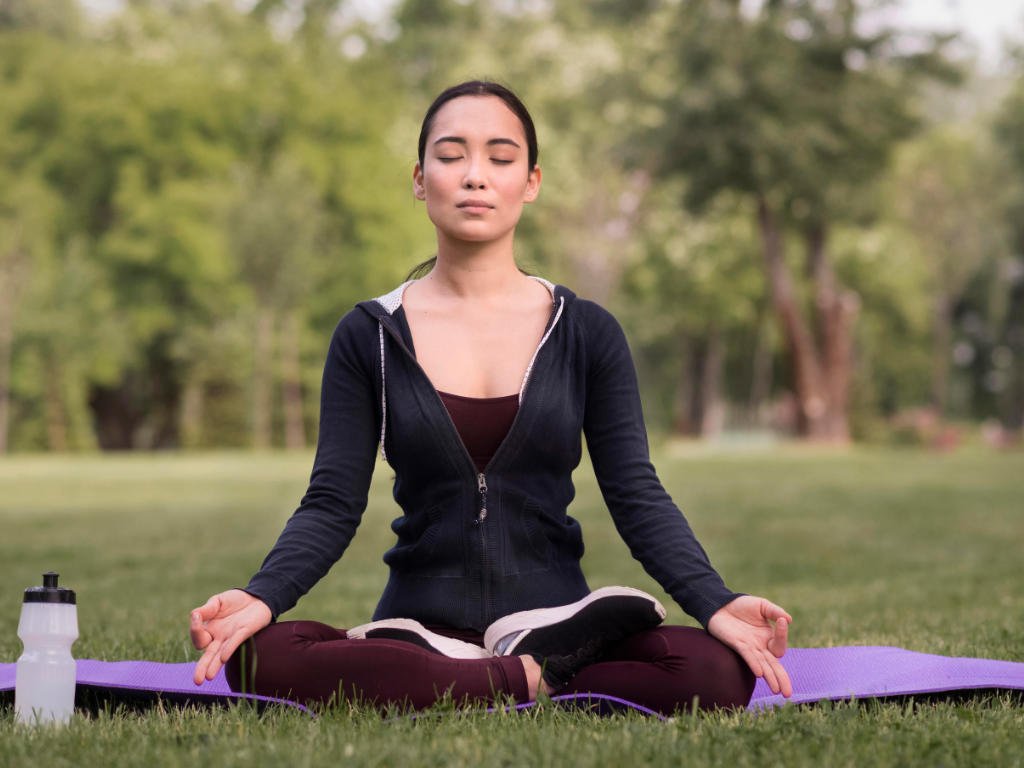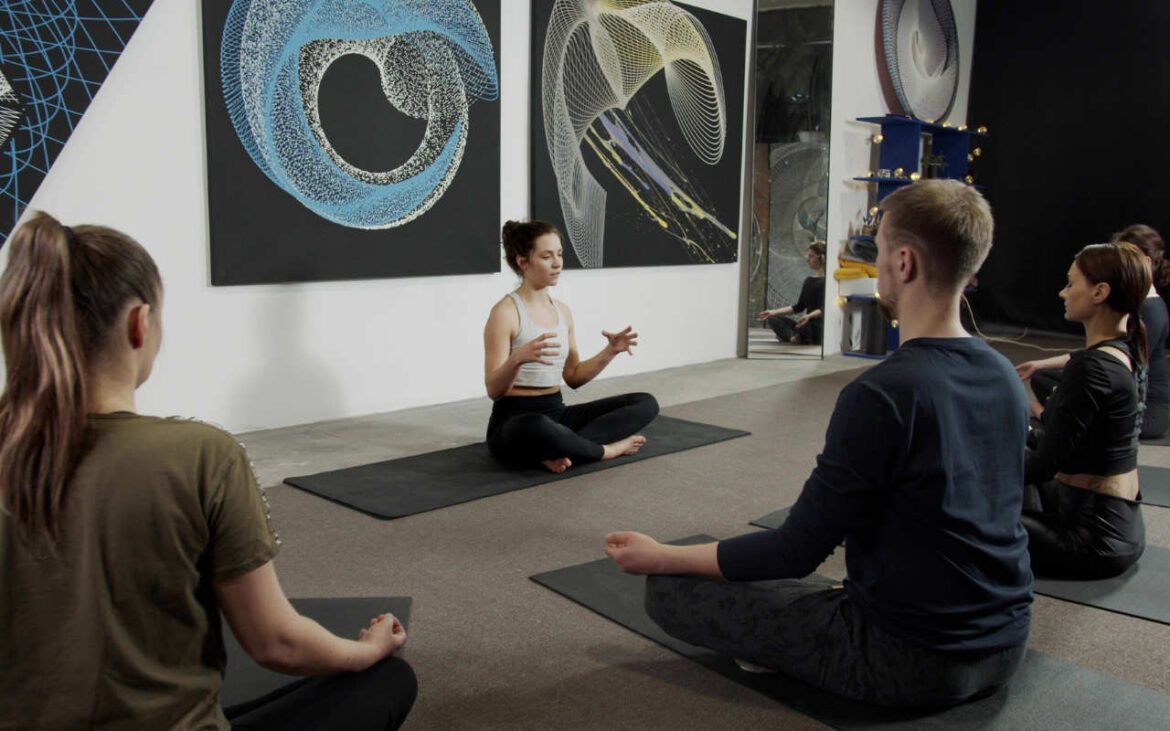Have you ever wondered why your mind feels like a browser with 47 tabs open, all playing different videos at once? You’re not alone. In our hyperconnected world, finding mental peace can feel like searching for silence at a rock concert. That’s where meditation techniques come in – they’re like a reset button for your overloaded brain.
The beautiful thing about meditation isn’t that it requires you to become a zen master overnight or spend hours sitting cross-legged on a mountain. It’s actually way more practical than that. These time-tested practices can slip into your daily routine as easily as your morning coffee, offering proven benefits for stress reduction, focus improvement, and overall mental wellness.
Research consistently shows that even brief meditation sessions can create meaningful changes in how we handle life’s curveballs. Whether you’re dealing with work pressure, relationship challenges, or just the general chaos of modern living, the right meditation approach can become your personal sanctuary – one you can access anywhere, anytime.
What Exactly Is Meditation?
Let’s clear up some misconceptions first. Meditation isn’t about emptying your mind completely or achieving some mystical state of enlightenment. It’s more like going to the gym for your brain – a practice where you use specific techniques to train your attention, awareness, and emotional responses.
Think of it as mental fitness training. Just like you might do bicep curls to strengthen your arms, meditation exercises strengthen your ability to stay present, manage stress, and respond thoughtfully rather than reactively to life’s challenges.
The core purpose revolves around developing mindfulness – that quality of paying attention to what’s happening right now without getting swept away by worries about tomorrow or regrets about yesterday. It’s about becoming the observer of your thoughts rather than being completely at their mercy.
What makes meditation particularly powerful is its flexibility. Some techniques focus on breathing, others on visualization, and some involve gentle movement. The common thread? They all help create space between you and the constant mental chatter that can drive stress and anxiety.
Modern research has validated what ancient practitioners knew intuitively – regular meditation practice literally changes your brain. Studies using brain imaging show increased activity in areas associated with learning, memory, and emotional regulation, while decreasing activity in regions linked to stress and anxiety.
The Science-Backed Mental Health Benefits
Here’s where things get really interesting. The mental health benefits of meditation aren’t just feel-good claims – they’re backed by solid scientific research that would make any skeptic take notice.
Stress reduction tops the list of proven benefits. When you meditate regularly, your body’s stress response system gets a much-needed tune-up. Your cortisol levels (that’s your primary stress hormone) tend to decrease, while your relaxation response gets stronger. It’s like having a built-in stress management system that gets more efficient with practice.
A comprehensive review published in JAMA Internal Medicine analyzed 47 randomized controlled trials and found moderate evidence that meditation programs can reduce anxiety, depression, and pain. The researchers noted that participants showed a relative improvement in mental health-related quality of life compared to control groups.
Focus improvement is another major win. In our age of constant notifications and digital distractions, meditation trains your attention like a personal trainer works your muscles. Regular practitioners often report enhanced concentration, better decision-making abilities, and improved cognitive flexibility – basically, your brain becomes more agile and resilient.
The emotional benefits are equally impressive. Meditation helps regulate the amygdala (your brain’s alarm system) while strengthening the prefrontal cortex (your rational thinking center). This means you’re less likely to get hijacked by intense emotions and more capable of responding thoughtfully to challenging situations.
Sleep quality often improves too. Many people find that meditation helps quiet the mental noise that keeps them tossing and turning at night. It’s like having a natural sleep aid that doesn’t come with side effects.

Top 10 Meditation Techniques That Actually Work
Ready to dive into the practical stuff? Here are ten meditation approaches that have stood the test of time and scientific scrutiny. Each one offers a different path to the same destination: a calmer, more centered you.
1. Mindfulness Meditation
This is probably the most accessible starting point for beginners. Mindfulness meditation involves paying attention to whatever’s happening in the present moment without trying to change it or judge it. Usually, you’ll focus on your breath as an anchor, but the goal isn’t to stop thinking – it’s to notice when your mind wanders and gently bring it back.
Start with just five minutes. Sit comfortably, close your eyes, and focus on the sensation of breathing exercises – the air moving in and out of your nostrils, the rise and fall of your chest. When thoughts pop up (and they will), acknowledge them like clouds passing in the sky, then return to your breath.
Research shows this simple practice can significantly reduce anxiety and depressive symptoms while improving overall emotional regulation.
2. Guided Imagery
If you’re someone who learns better with direction, guided imagery might be your sweet spot. This technique involves following along with recorded instructions or a facilitator who guides you through visualizing calming scenarios – maybe a peaceful beach, a quiet forest, or even imagining light flowing through your body.
The beauty of guided imagery lies in its ability to engage your imagination constructively. Instead of letting your mind create worst-case scenarios, you’re actively directing it toward peaceful, healing images. This makes it particularly effective for stress reduction and emotional soothing.
Many people find this approach less intimidating than silent meditation because there’s always something to focus on, reducing that “am I doing this right?” anxiety that can derail beginners.
3. Breathing Exercises
Never underestimate the power of conscious breathing. Breathing exercises form the foundation of many meditation practices because breath is always available and directly connects to your nervous system.
Try the 4-7-8 technique: inhale for 4 counts, hold for 7, exhale for 8. This pattern activates your parasympathetic nervous system – your body’s natural relaxation response. Box breathing (4 counts in, hold for 4, out for 4, hold for 4) is another favorite among people who need to enhance focus quickly.
What’s beautiful about breathing techniques is their portability. You can use them before a big presentation, during a stressful commute, or when you’re lying in bed unable to sleep.
4. Loving-Kindness Meditation
This practice might feel a bit awkward at first, but stick with it – the results can be transformative. Loving-kindness meditation involves generating feelings of compassion and goodwill, starting with yourself and gradually extending to others.
You’ll typically repeat phrases like “May I be happy, may I be healthy, may I be at peace,” then extend these wishes to loved ones, neutral people, difficult people, and eventually all beings. Research suggests this practice can improve emotional well-being, reduce self-criticism, and even increase gray matter in areas of the brain associated with emotional processing.
It’s particularly helpful if you struggle with self-compassion or find yourself caught in cycles of negative self-talk.
5. Transcendental Meditation
TM, as it’s often called, centers on silently repeating a personalized mantra with the goal of transcending ordinary waking consciousness. This technique comes from ancient Vedic traditions and is known for being relatively easy to learn and practice.
Unlike mindfulness meditation, where you observe thoughts, TM encourages a more effortless approach where you allow the mantra to naturally draw your attention inward. Many practitioners appreciate its simplicity – there’s no wrestling with wandering thoughts or trying to achieve a particular state.
The research on TM is particularly robust, with studies showing benefits for blood pressure, anxiety, and overall stress management.
6. Body Scan Meditation
Perfect for people who spend most of their day disconnected from physical sensations, body scan meditation guides your awareness systematically through different parts of your body. You might start at the top of your head and work down to your toes, or vice versa.
The practice involves noticing physical sensations without trying to change them – just observing what’s there. This technique is excellent for developing relaxation and stress relief because it helps release physical tension you might not even realize you’re carrying.
It’s also incredibly grounding, literally bringing you back into your body when anxiety or stress has you living entirely in your head.
7. Zen Meditation (Zazen)
This traditional Buddhist practice involves seated meditation, often with attention focused on breathing or contemplating koans (paradoxical questions designed to provoke insight). Zen meditation emphasizes stillness and often requires a more formal setup with specific posture and environment.
While it might seem intimidating, many people find the structured approach helpful. There’s something powerful about dedicating time and space specifically for meditation – it sends a signal to your mind that this practice matters.
The emphasis on stillness can be particularly beneficial for people whose lives feel constantly in motion.

8. Vipassana Meditation
Also known as insight meditation, Vipassana is one of the oldest meditation techniques, aimed at developing clear insight into the nature of reality through mindful awareness of thoughts, feelings, and sensations as they arise and pass away.
This practice often involves observing the impermanent nature of all experiences, which can lead to profound insights about attachment, suffering, and the nature of happiness. Many people find it intellectually satisfying because it combines meditative practice with philosophical understanding.
Vipassana is often taught in structured retreat settings, making it ideal for people who prefer intensive, immersive learning experiences.
9. Movement-Based Meditation
Who says meditation requires sitting still? Movement-based meditation includes practices like Tai Chi, walking meditation, or mindful yoga. These approaches incorporate gentle physical movements with mindful attention to bodily sensations and breath.
This style works particularly well for people who find traditional seated meditation challenging or uncomfortable. The movement provides something concrete to focus on while still developing focus and mindfulness skills.
Walking meditation, for instance, involves paying careful attention to the sensation of each step, the rhythm of movement, and the changing environment around you. It’s meditation disguised as a pleasant stroll.
10. Mantra Meditation
Mantra meditation involves the repetitive chanting or silent repetition of a word, phrase, or sound. The mantra serves as a focal point for the mind, helping to achieve mental clarity and concentration.
Popular mantras include “Om,” “So Hum” (I am), or even simple English phrases like “peace” or “let go.” The repetition creates a rhythm that can be deeply soothing and helps prevent the mind from wandering into stressful thoughts.
This technique works well for people who find silence uncomfortable or who prefer a more structured approach to meditation.
Making Meditation Part of Your Real Life
Knowing about meditation techniques is one thing – actually integrating them into your daily routine is another. Here’s how to make it happen without turning it into another source of stress.
Start ridiculously small. I’m talking two or three minutes small. The biggest mistake people make is trying to meditate for 20 minutes on day one, then feeling like failures when they can’t stick with it. Think of it like starting to exercise – you wouldn’t run a marathon on your first day, right?
Consistency beats duration every time. Five minutes every day is infinitely more valuable than an hour once a week. Your brain adapts to patterns, so regular practice, even if brief, creates neural pathways that make meditation feel more natural over time.
Create a meditation corner. You don’t need a whole room, just a consistent spot that becomes associated with practice. Maybe it’s a cushion by the window, a comfortable chair, or even a specific spot on your couch. Having a designated space signals to your brain that it’s time to shift into a calmer state.
Use technology wisely. Apps like Headspace, Calm, or Insight Timer can provide structure and guidance, especially when you’re starting out. They offer variety, progress tracking, and the convenience of having a meditation teacher in your pocket.
Link it to existing habits. The easiest way to build a new habit is to attach it to something you already do consistently. Maybe you meditate right after your morning coffee, before your evening shower, or after brushing your teeth. This creates a natural flow that requires less willpower to maintain.
Be flexible with techniques. Some days you might feel drawn to mindful breathing, other days to loving-kindness meditation. Let your needs guide your choice rather than rigidly sticking to one approach.
Track your mood and energy. Keep a simple log of how you feel before and after meditation. This isn’t about perfectionism – it’s about noticing patterns and celebrating small improvements. You might discover that certain techniques work better for specific situations or times of day.
For those interested in exploring more structured mindfulness techniques, there are excellent resources that can complement your meditation practice and provide additional strategies for mental wellness.
What Medical Professionals Say About Meditation
The medical community’s stance on meditation has evolved dramatically over the past few decades. According to the National Center for Complementary and Integrative Health, meditation is generally considered safe for healthy people, with growing evidence supporting its effectiveness for various health conditions.
Healthcare providers increasingly recommend meditation as a complementary approach for managing stress, anxiety, depression, and even physical conditions like high blood pressure and chronic pain.
What’s particularly encouraging is that major medical institutions are now integrating meditation-based interventions into treatment programs. Mindfulness-Based Stress Reduction (MBSR) and Mindfulness-Based Cognitive Therapy (MBCT) are now offered in hospitals and clinics worldwide.
The scientific evidence continues to grow stronger. A recent systematic review found that meditation interventions showed significant improvements in various mental health outcomes, with effect sizes comparable to those of established psychological interventions.

Common Questions About Starting Your Practice
How long should I meditate as a beginner?
Start with 3-5 minutes daily. This might seem short, but consistency matters more than duration. Once this feels comfortable (usually after 2-3 weeks), gradually increase by a minute or two. Most people find 10-20 minutes to be a sweet spot for daily practice.
Is it normal for my mind to wander constantly during meditation?
Absolutely! Having a wandering mind doesn’t mean you’re failing at meditation – it means you’re human. The practice isn’t about stopping thoughts; it’s about noticing when your mind wanders and gently redirecting attention back to your focus point. Each time you notice and return, you’re actually strengthening your awareness muscle.
Do I need special equipment or apps to meditate effectively?
Not at all. While cushions, apps, and other tools can be helpful, all you really need is a quiet space and a few minutes. Your breath is always available as a meditation object, and simple techniques like mindful breathing require nothing but attention.
What’s the best time of day to meditate?
The best time is whenever you can be consistent. Many people prefer morning meditation because it sets a peaceful tone for the day and there are fewer distractions. However, evening meditation can help you unwind from daily stress. Experiment with different times to see what works for your schedule and energy levels.
Can meditation replace therapy or medication for mental health issues?
While meditation offers significant mental health benefits, it’s not a replacement for professional treatment when dealing with serious conditions like clinical depression, anxiety disorders, or PTSD. Think of meditation as a powerful complement to, not a substitute for, appropriate medical or psychological care.
How quickly will I notice benefits from meditation?
Some people notice subtle changes in stress levels and sleep quality within the first week or two. More significant changes in emotional regulation, focus, and overall well-being typically develop over weeks to months of consistent practice. Remember, meditation is a skill that develops gradually – be patient with the process.
Building Your Personal Meditation Toolkit
The beauty of having multiple meditation techniques in your repertoire is that you can match the method to your current needs and circumstances. Some days call for the gentle focus of mindful breathing, while others might benefit from the emotional healing of loving-kindness meditation.
Consider creating a personal practice rotation. Maybe Mondays start with body scan meditation to reconnect with your physical self after the weekend. Wednesday might be perfect for guided imagery to navigate midweek stress. Friday evening could be ideal for loving-kindness meditation to release any work tensions and prepare for the weekend.
Don’t underestimate the power of micro-meditations either. A few conscious breaths before a difficult conversation, a moment of mindfulness while waiting in line, or a brief loving-kindness practice during your commute all contribute to your overall mental wellness.
For those dealing with high stress levels, you might find additional support through proven stress management techniques that can work alongside your meditation practice to create a comprehensive approach to mental wellness.
The journey of meditation isn’t about perfection – it’s about showing up consistently for yourself and your mental health. Some sessions will feel amazing, others might feel scattered or difficult. Both types are valuable and normal parts of the practice.
As you develop your meditation skills, you might notice benefits extending beyond your formal practice time. Many people report improved patience, better sleep, enhanced creativity, and more resilience in facing daily challenges. These ripple effects are some of the most rewarding aspects of regular meditation.
Remember that meditation is deeply personal. What works wonderfully for your friend might not be the right fit for you, and that’s perfectly okay. The key is experimenting with different approaches until you find techniques that resonate with your personality, lifestyle, and specific needs.
Regular engagement with meditation techniques offers a reliable path to stress reduction, focus improvement, and enhanced mindfulness. In a world that often feels chaotic and demanding, having these tools at your disposal can make the difference between feeling overwhelmed by life and feeling equipped to handle whatever comes your way with greater ease and wisdom.
Have you tried any of these meditation techniques? What’s worked best for managing stress in your daily life? Share your experiences in the comments below – your insights might be exactly what someone else needs to hear to begin their own meditation journey. For those looking to deepen their practice, consider exploring local meditation groups, weekend workshops, or online communities where you can connect with other practitioners and continue learning.


